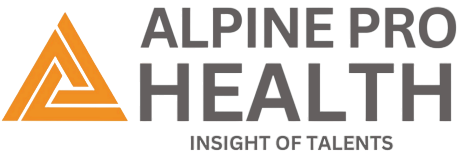In today’s value-based healthcare landscape, risk adjustment coding plays a crucial role in ensuring accurate reimbursements and reflecting the true health status of patient populations. As healthcare data grows exponentially, traditional coding methods are being stretched to their limits. This is where AI steps in revolutionizing how coding accuracy is achieved, especially in risk-adjusted payment models.
In this article, we’ll explore how AI is transforming risk adjustment, the benefits it brings to healthcare organizations, and what the future holds for coders and providers alike.
A Closer Look at Risk Adjustment Coding
HCC coding is a process used to predict the future healthcare costs of patients by accounting for factors like age, gender, and chronic conditions. Government programs such as Medicare Advantage (MA) and Affordable Care Act (ACA) plans rely on this model to ensure fair and adequate Reimbursement.
This process requires the precise identification of Hierarchical Condition Categories (HCCs) using the information documented in the patient’s clinical records.
Each HCC category represents a different risk level and contributes to the Risk Adjustment Factor (RAF) score, which influences payment rates.
The Challenge of Accuracy in Risk Adjustment Coding
Although HCC coding plays a vital role, it presents several notable challenges:
- Complex documentation and varying physician styles
- Manual errors and missed codes
- Data volume from diverse sources (EHRs, claims, lab results)
- Time-consuming chart reviews
In fact, even the smallest coding inaccuracies can lead to underpayments, overpayments, or RADV audits, thereby putting healthcare organizations at financial and compliance risk.
Enter AI: A Game-Changer in Risk Adjustment
AI technologies, especially Natural Language Processing (NLP) and Machine Learning (ML), are reshaping the way risk adjustment is handled. These tools can process unstructured clinical data, identify coding gaps, and suggest accurate HCC codes in real-time or during retrospective reviews.
How AI is enhancing accuracy in risk adjustment coding?
1. Enhanced Chart Review with NLP
NLP allows AI to “read” and understand clinical notes, lab results, discharge summaries, and other unstructured data. It extracts relevant diagnoses and identifies suspect conditions that may have been documented but not coded.
Example: If a provider notes “history of CHF with current symptoms” in free-text, NLP can flag this for coders as a valid opportunity for HCC 85 (Congestive Heart Failure).
2. Predictive Modeling for Suspect HCCs
AI algorithms can analyze historical claims and clinical data to predict undiagnosed conditions based on patterns, lab values, or prescription usage. These “suspect HCCs” can then be reviewed by coders or providers for confirmation.
This proactive approach supports prospective risk adjustment coding and improves coding completeness.
3. Real-Time Coding Suggestions
AI-powered coding platforms can integrate with Electronic Health Records (EHRs) to provide real-time coding support as documentation is created. This helps providers ensure accurate diagnosis coding at the point of care, reducing reliance on retrospective reviews.
4. Automated Data Validation
AI can cross-check clinical data with coding logic and payer guidelines to ensure that each HCC submission is accurate, supported, and compliant. This reduces the risk of RADV audit failures and improper payments.
5. Improved Efficiency and Productivity
AI tools can handle large volumes of data faster than humans. By automating data extraction and flagging opportunities, coders can focus on validation and clinical interpretation instead of tedious chart navigation.
The result? Faster coding cycles, fewer missed HCCs, and higher RAF accuracy.
6. Continuous Learning and Adaptation
AI systems learn from coder feedback, claim outcomes, and updated coding rules over time. This enables them to evolve and deliver more accurate and context-aware coding suggestions with each iteration.
Benefits of AI in Risk Adjustment Coding
Improved Coding Accuracy
AI helps reduce human errors and missed codes by consistently analyzing every piece of clinical data.
Higher Reimbursement Rates
Accurate RAF scores ensure appropriate payments from Medicare Advantage and ACA plans.
Better Audit Readiness
AI-powered documentation validation minimizes the risk of RADV audit failures and clawbacks.
Reduced Administrative Burden
Coders and CDI specialists can work more efficiently, allowing healthcare organizations to scale operations.
Enhanced Compliance
AI tools align with CMS and payer rules, ensuring that all diagnoses meet documentation standards.
Challenges and Considerations
While AI brings numerous advantages, its implementation requires careful planning. Here are some key considerations:
- Data Privacy & HIPAA Compliance: Ensure AI vendors comply with healthcare data regulations.
- Human Oversight: AI should support, not replace, certified coders and clinicians.
- System Integration: AI tools should seamlessly integrate with existing EHRs and coding platforms.
- Training & Adoption: Teams must be trained to understand and trust AI recommendations.
The Role of Coders in an AI-Driven Future
Many believe AI will replace coders, but it’s a support tool not a replacement. It enhances the coder’s capabilities by removing repetitive tasks and providing insights that would otherwise be missed.
Coders and CDI specialists remain essential for:
- Validating clinical relevance
- Interpreting ambiguous documentation
- Ensuring ethical and compliant code assignments
The future will demand AI-literate coders who can work alongside technology to achieve better outcomes.
What the Future Holds?
Moreover, the demand for coding will only grow as more providers transition to value-based care models. As regulations continue to evolve and data becomes increasingly complex, AI, therefore, will be the key to navigating these changes efficiently.
Forward-thinking healthcare organizations are already investing in clinical AI platforms that combine risk adjustment, CDI, and real-time analytics.
Final Thoughts
Indeed, Artificial Intelligence is no longer a futuristic concept—it’s a present-day ally in improving the accuracy, efficiency, and compliance of Risk Adjustment coding. Consequently, by embracing AI technologies, healthcare organizations can stay ahead of audits, optimize reimbursements, and ensure that patients’ true health risks are properly reflected
As we move forward, the synergy between AI and human expertise will define the next generation of risk adjustment and medical coding excellence.


